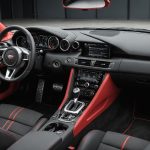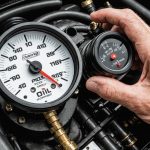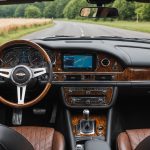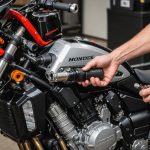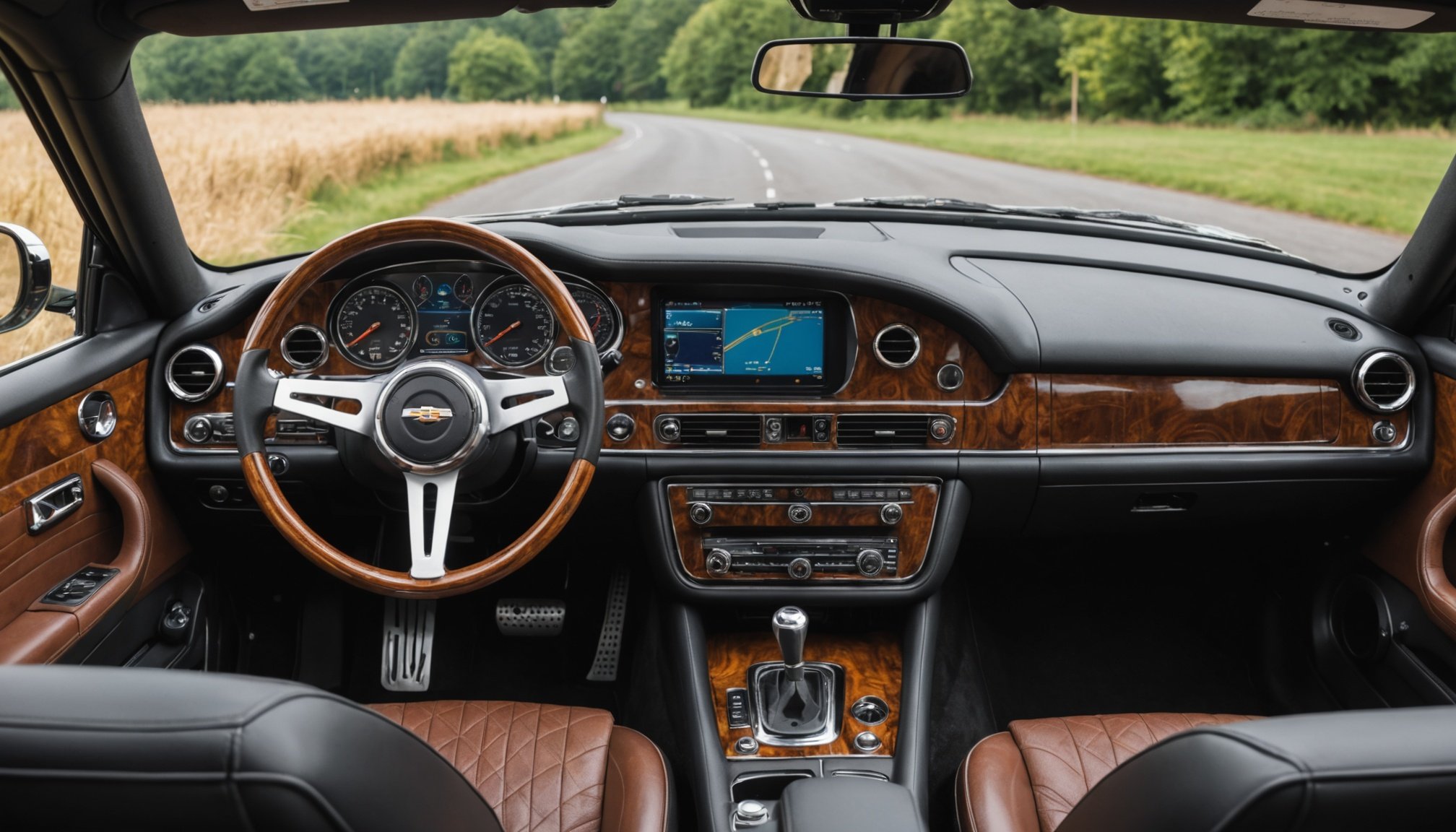Overview of Digital Dashboards
Digital dashboards are revolutionizing the automotive industry, offering drivers a wealth of information at their fingertips through vibrant customizable displays. These dashboards integrate advanced automotive technology to provide real-time data, navigation assistance, and multimedia connectivity, serving as a central hub for a modern vehicle’s functions. Dashboard upgrades not only enhance functionality but also elevate the driving experience, transforming how information is accessed and displayed.
Historically, British automobiles featured classic analog dashboards, which were often minimalist and primarily focused on speed and fuel indicators. Today, the shift from analog to digital reflects broader trends in automotive technology integration, where efficiency and information accessibility are paramount. Modern drivers demand dashboards that allow for a personalized touch, adapting to individual needs and preferences through tailor-made interfaces.
Have you seen this : Enhance your british sports car’s audio experience: proven techniques for superior sound quality
Current trends point towards increasingly sophisticated dashboard designs that cater to tech-savvy consumers. These upgrades are not merely about aesthetics; they’re about creating a seamless interaction between the driver and their vehicle. As technology evolves, we anticipate that these systems will continue to incorporate advanced features, such as voice control and augmented reality, thereby paving the way for an even more interactive driving experience.
Types of Digital Dashboards
When exploring digital dashboards, it’s vital to understand the variety available and the innovative features they offer. Each type caters to different needs and preferences, allowing a personalized driver experience.
This might interest you : Unlock fuel savings: proven strategies to boost efficiency in british hybrid suvs!
Analog vs. Digital Dashboards
Traditional analog dashboards, adorned with physical dials and gauges, contrast starkly with their modern digital counterparts. Analog displays, while charming, lack the versatility of digital technology, which provides rich, interactive visual feedback. Digital dashboards offer real-time updates, enhancing safety and awareness on the road.
Fully Customizable Dashboards
Fully customizable dashboards redefine personalization. Drivers can tailor these interfaces to fit their unique preferences, adjusting everything from display colours to widget layout. This adaptability ensures that essential information is presented in a manner best suited to the individual, making every trip a comfortable and informed journey.
Plug-and-Play Options
For those seeking simplicity, plug-and-play dashboard solutions provide an easy upgrade path. These systems minimise installation complexity, often requiring no professional assistance. While their ease of use is a significant advantage, it’s crucial to consider potential limitations in customisation compared to more advanced systems. However, they offer an efficient option for those wishing to quickly embrace new automotive technology.
Compatibility with British Car Models
When considering a digital dashboard upgrade, understanding your vehicle’s compatibility is crucial. Many British car models can seamlessly integrate these technologies, enhancing both function and aesthetics. Popular models, such as the MG, Jaguar, and Triumph, often support such upgrades, offering drivers enhanced satisfaction through modernized interfaces.
Common considerations for drivers include understanding the unique specifications of each model. Vehicles like the Jaguar XK can prioritize high-resolution displays for navigation integration, while others, like the Triumph TR6, can emphasize maintaining classic aesthetics through discreet dashboard integration. Being aware of the automotive technology each model can accommodate ensures a successful upgrade.
For drivers unsure about their vehicle’s compatibility, it’s beneficial to consult online resources. Websites and forums dedicated to British car enthusiasts often provide specific requirements and verified user experiences. Additionally, reaching out to certified dealerships or car clubs specializing in these models might illuminate any overlooked compatibility issues, ensuring your digital dashboard complements your beloved British vehicle perfectly.
In summary, careful consideration and research are recommended for anyone looking to enhance their British car models with a modern digital dashboard, paving the way for a smooth and informed upgrade process.
Installation Steps for Upgrading Dashboards
Upgrading your vehicle’s digital dashboard involves a series of installation steps that require meticulous preparation and the right tools. Understanding the process ensures a seamless integration of new automotive technology into your vehicle.
Preparation and Planning
Before you begin the dashboard upgrade process, it is crucial to plan thoroughly. Identify the specific digital dashboard model compatible with your car. Ensure you have all necessary documents, including installation manuals, and set aside enough time for the task.
Tools and Materials Needed
Gathering the right tools and materials is vital for a successful installation. You’ll require basic tools like a screwdriver set, wire cutters, and possibly a drill for some adjustments. In addition, purchase any necessary materials such as wire connectors or mounting brackets specific to your digital dashboard type.
Step-by-Step Installation Process
The installation guide begins with disconnecting the car battery to ensure safety. Remove the existing dashboard by unscrewing and detaching all connections. Carefully install the new digital dashboard, ensuring that all connections are secure according to the manufacturer’s instructions. Double-check your work before reconnecting the battery and testing the dashboard functions to ensure everything operates correctly.
Troubleshooting Common Issues
Digital dashboards, while advanced, can sometimes pose challenges. Troubleshooting tips are essential for addressing these issues efficiently, maintaining dashboard functionality, and ensuring a seamless driving experience.
Common problems during a dashboard installation can include loose connections, software glitches, or misaligned displays. If the dashboard does not power on after installation, first check all electrical connections. Ensuring a secure attachment often resolves this issue.
To address software-related problems, verify that the dashboard firmware is up-to-date. Frequent crashes or unresponsive dashboard functions may indicate the need for a software update or a system reset to restore normal functionality. Regularly checking for updates can prevent potential complications by keeping the system running smoothly.
Post-installation, continued maintenance of the dashboard is crucial. Dust and debris can accumulate, potentially obstructing sensors or affecting the display quality. A routine check and cleaning prevent these common issues, preserving the dashboard’s performance over time.
If challenges persist, consulting a professional or referring to the manufacturer’s support can provide additional troubleshooting advice. These solutions help ensure that your digital dashboard remains both functional and efficient long after installation, enhancing the driving experience consistently.
Aesthetic Considerations for Digital Dashboards
When upgrading to a digital dashboard, the aesthetic design plays a pivotal role in enhancing the overall visual appeal of your vehicle. The integration of modern technology into classic car interiors demands careful consideration of styling elements.
Integrating Modern Design with Classic Styling
Blending modern dashboard technology with the classic styling of traditional vehicles requires a nuanced approach. Seamless integration preserves the vintage aesthetic while incorporating advanced customization options. It’s essential to choose materials and finishes that complement the existing design, ensuring cohesive interior harmony.
Lighting and Display Options
Lighting in digital dashboards offers considerable room for creativity, influencing both function and style. Various lighting options, from LED to ambient backlighting, allow for a personalized setting that enhances readability and complements your vehicle’s character. Display options, including high-definition screens, provide clear and vibrant interfaces, crucial for leveraging the full scope of dashboard functions.
Color Customization
Colour schemes contribute significantly to the dashboard’s aesthetic appeal. Options for colour customization enable drivers to modify display settings to match personal preferences or align with the car’s interior tones. Experimenting with assorted palettes, from subtle monochromes to bold contrasts, can add a unique touch that personalizes and elevates the driving experience further.
User Reviews and Recommendations
Digital dashboards have garnered mixed user feedback, with experiences varying based on brand, performance, and ease of installation. Generally, users appreciate the enhanced automotive technology that digital dashboards bring, such as real-time data and navigation integration. Brands like Pioneer and Alpine frequently receive high marks for user-friendly interfaces and robust functionality. However, some users note installation complexities, particularly with older vehicle types where compatibility isn’t straightforward.
When considering a dashboard upgrade, it’s beneficial to weigh product recommendations from various sources. Many drivers suggest choosing brands known for excellent customer support, which proves invaluable when troubleshooting issues or seeking installation guidance. Taking note of user feedback can help prospective buyers avoid models prone to technical glitches or poor software support.
For trustworthy resources, car enthusiasts often rely on automotive forums and community groups dedicated to digital dashboards. These platforms offer insights from fellow users who have real-world experience with different models and configurations. They can provide personal accounts of product performance, offering recommendations to suit specific vehicle needs. While online commerce sites do not offer direct links, they remain a popular venue for purchasing recommended components, bolstered by user reviews and expert opinions.
Additional Resources and Links
Exploring the world of digital dashboards can be overwhelming, but numerous resources provide valuable insights and guidance. From buying guides to expert consultations, enthusiasts and newcomers alike can benefit from these tools.
Buying Guides for Digital Dashboards
When selecting the ideal digital dashboard, refer to dedicated buying guides. These resources offer comparisons between brands, shedding light on features such as customizable displays and compatibility with various vehicles. Such guides assist in making informed choices suited to specific needs and budgets.
Forums and Community Support
Connecting with forums and communities focused on automotive restoration offers invaluable peer insights. Engaging with users who have firsthand experience with diverse types of digital dashboards, especially those involving British car models, can illuminate challenges and solutions. This real-world advice often provides product recommendations based on performance and user satisfaction.
Expert Consultation Services
For a more personalized approach, consider seeking expert consultation services. Professionals in automotive technology can provide tailored advice, ensuring that your dashboard upgrade process aligns perfectly with your vehicle type and personal preferences. These experts often predict emerging trends, giving you a competitive edge in the fast-evolving world of digital dashboards.
Delving into these resources solidifies confidence in upgrading your vehicle’s dashboard, enhancing both functionality and style.


